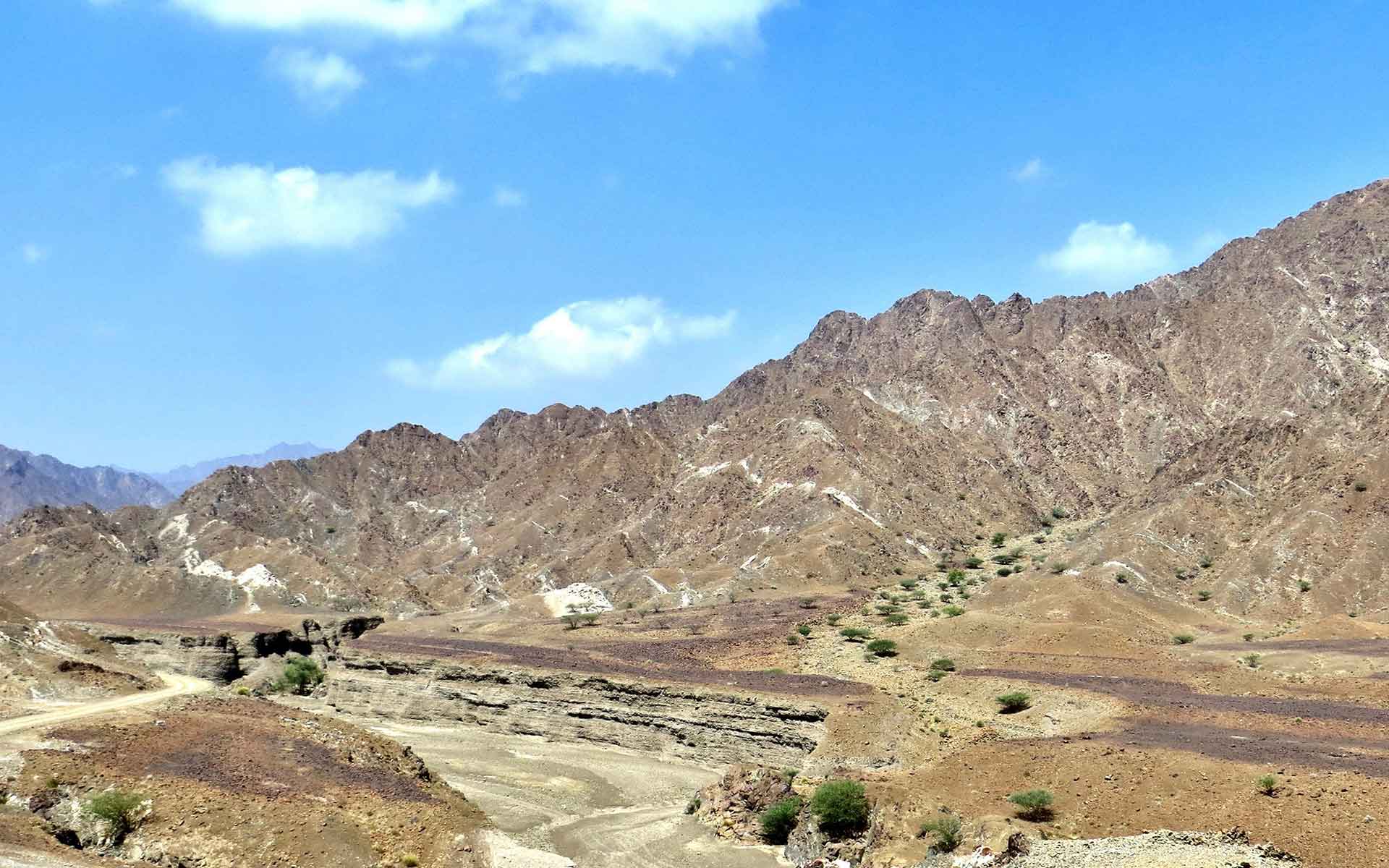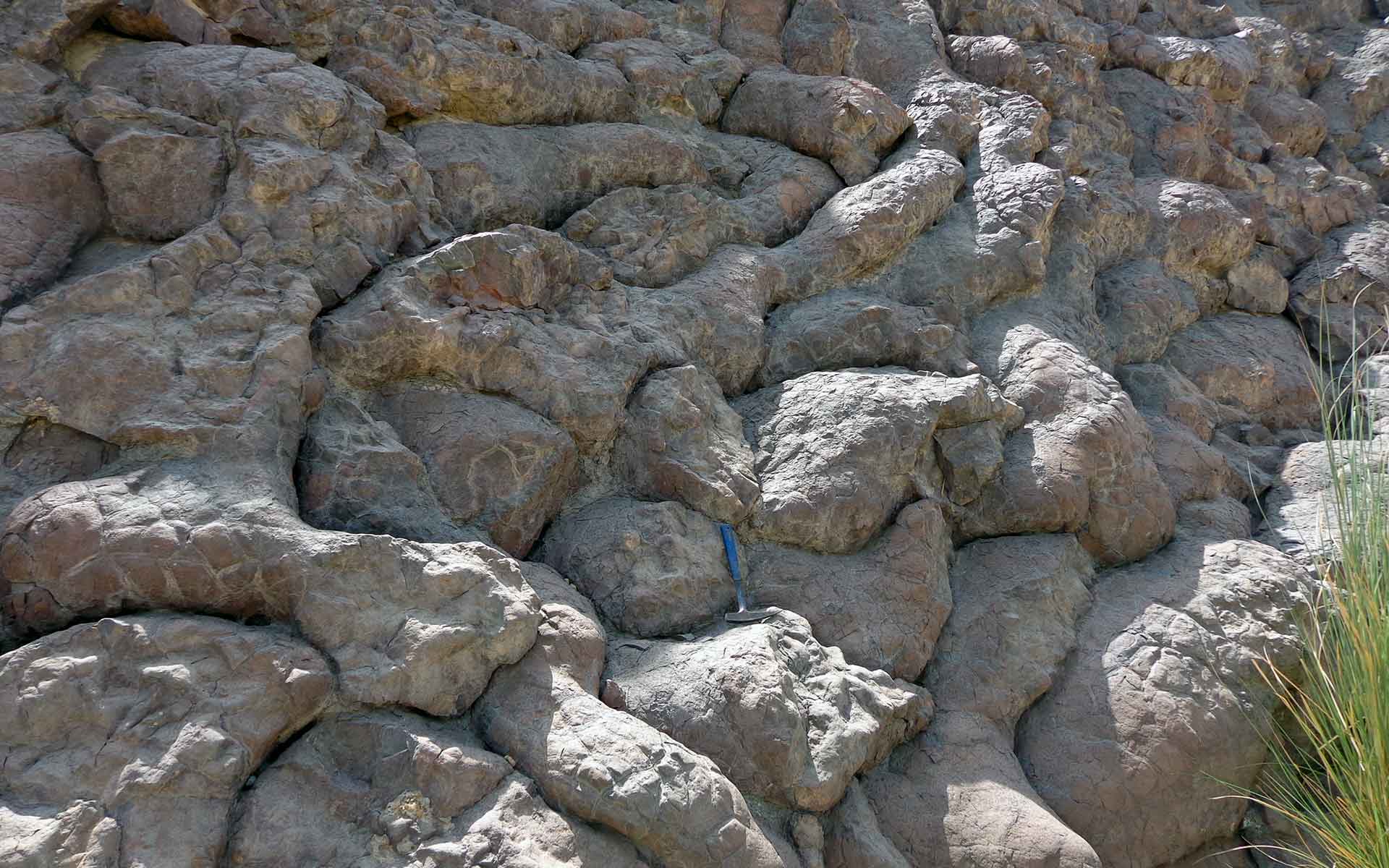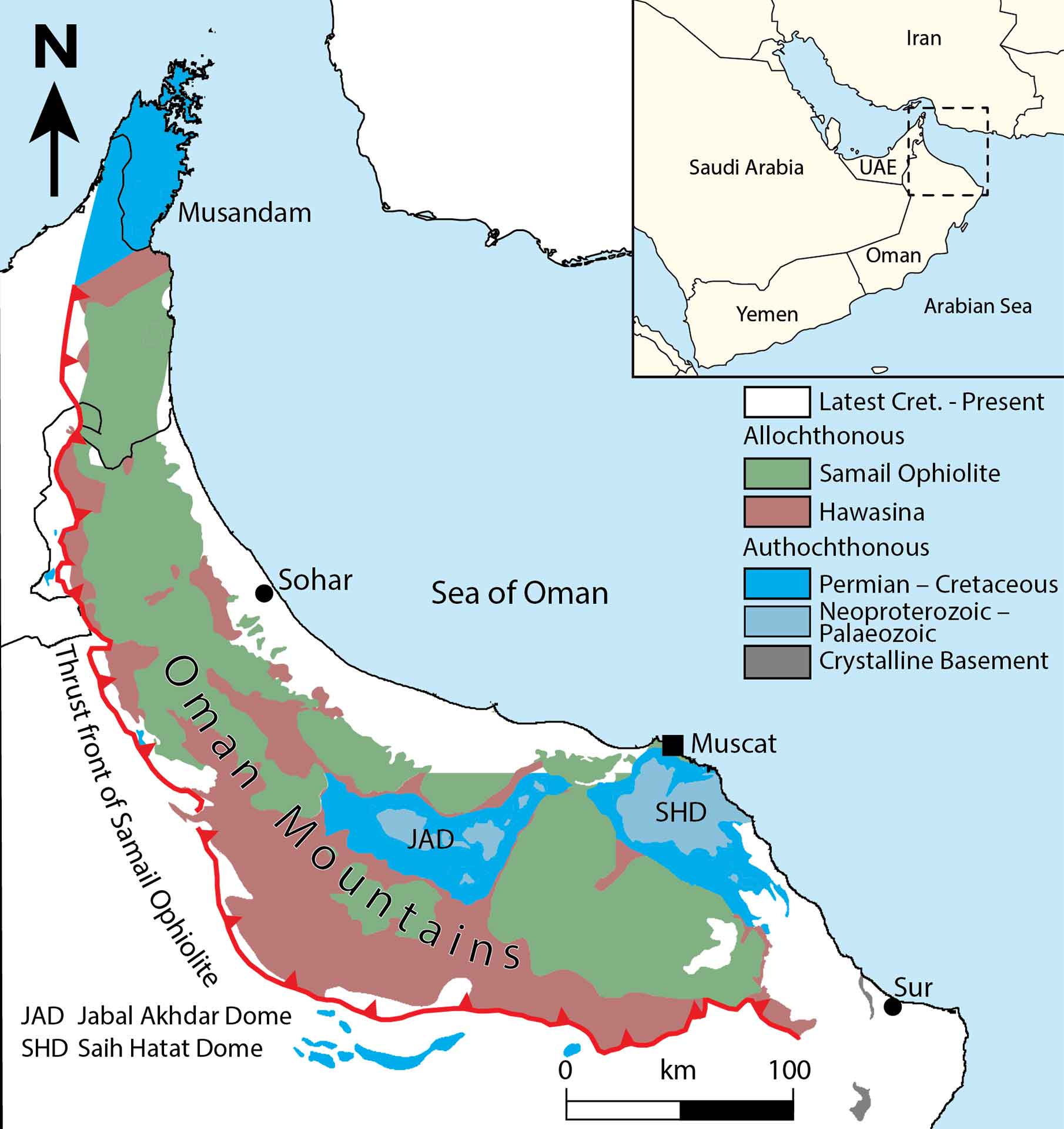
Mantle section of the Samail Ophiolite with white granitic dikes (Wadi Fizh). Brown to purple Quaternary wadi sediments in the foreground. View to the NNW.
Geological Period
Cretaceous
Main geological interest
Igneous and Metamorphic petrology
Tectonics
Location
Oman Mountains, Oman
23°10’00”N, 058°00’00”E
Mantle section of the Samail Ophiolite with white granitic dikes (Wadi Fizh). Brown to purple Quaternary wadi sediments in the foreground. View to the NNW.
The largest, best preserved and exposed oceanic lithosphere on land. A world reference for obduction and igneous processes related studies.
The Samail Ophiolite is a unique natural laboratory of high global geoscientific relevance for process-related research on the oceanic lithosphere, magmatism, ocean-floor metamorphism and ophiolite obduction. Oceanic lithosphere covers most the Earth, but is usually hidden under oceans and difficult to access, but in Oman/U.A.E., oceanic lithosphere covers >10,000 square km on land allowing for convenient access of various lithospheric key positions and lateral and vertical comparisons. The ophiolite commonly displays primary magmatic features. Other special aspects are that obduction ensued when the oceanic lithosphere was young, hot and buoyant and while spreading occurred as well as continental subduction and exhumation.
- Geological description
The Samail Ophiolite is the world’s largest, best preserved and exposed thrust sheet of oceanic lithosphere on land (>10,000 square km; Nicolas et al., 2000). It has a thickness of <16 km and consists of oceanic mantle (mainly harzburgite, some dunite, and wehrlite) and oceanic crust (gabbro, sheeted dikes, pillow lava). The rocks formed in a spreading center above an intra-oceanic subduction zone at ~95 Ma in the Neo-Tethys Ocean (e.g., Tilton et al., 1981). Coeval with its formation, these rocks were thrust upon deep-sea sediments and were eventually obducted above thinned continental lithosphere of a >450-km-wide oceanic basin (Hawasina Basin, Glennie et al., 1974). Coeval formation and thrusting explains the limited presence of deep-sea sediments blanketing the Samail Ophiolite as there was hardly any time for deposition. The ophiolite had been thrust over the Arabian platform for another ~150 km, when obduction ceased at ~75 Ma. In contrast to other ophiolites at the northern margin of Gondwana (Iran, Turkey), the Samail Ophiolite was not affected by continent-continent collision. In Oman, many outstanding outcrops exist, including world-class examples for the Moho, gabbro, sheeted dikes, pillow lava and listwaenite, which is fully carbonated peridotite (important for carbon sequestration).
- Scientific research and tradition
Since the first descriptions of the Samail Ophiolite in the late 1960’s and early 1970’s (Reinhardt, 1969; Allemann and Peters, 1972), a wealth of publications have been published, focusing on the mineralogy/petrology, geochemistry, magmatism, dating, origin and tectonic setting, as well as on the continental subduction/exhumation (e.g., Hansman et al., 2021).
- Reference
Allemann, F. and Peters, T. (1972) ‘The Ophiolite-Radiolarite Belt of the North-Oman Mountains’, Eclogae Geologicae Helvetiae, 65(3), pp. 657–697.
Glennie, K.W. et al. (1974) Geology of the Oman Mountains. Delft: Koninklyk Nederlands Geologisch Mynbouwkundig Genootschap (Nederlands Geologisch Mynbouwkundiq Genootschap, Transactions, 31).
Hansman, R.J. et al. (2021) ‘Structural architecture and Late Cretaceous exhumation history of the Saih Hatat Dome (Oman), a review based on existing data and semi-restorable cross-sections’, Earth-Science Reviews, 217, p. 103595. Available at: https://doi.org/10.1016/j.earscirev.2021.103595.
Lippard, S.J., Shelton, A.W. and Gass, I.G. (1986) The ophiolite of northern Oman. Geological Society of London (Memoir, 11).
Nicolas, A. et al. (2000) ‘Accretion of Oman and United Arab Emirates ophiolite – Discussion of a new structural map’, Marine Geophysical Researches, 21(3), pp. 147–180. Available at: https://doi.org/10.1023/A:1026769727917.
Reinhardt, B.M. (1969) ‘On the genesis and emplacement of ophiolites in the Oman Mountains geosyncline’, Schweizerische Mineralogische und Petrographische Mitteilungen, 49(1), pp. 1–30.
Tilton, G.R., Hopson, C.A. and Wright, J.E. (1981) ‘Uranium-lead isotopic ages of the Samail Ophiolite, Oman, with applications to Tethyan ocean ridge tectonics’, Journal of Geophysical Research: Solid Earth, 86(B4), pp. 2763–2775. Available at: https://doi.org/10.1029/JB086iB04p02763.
- Author(s)
Andreas Scharf.
Department of Earth Sciences, Sultan Qaboos University, Sultanate of Oman.
Frank Mattern.
14532 Stahnsdorf, Germany.
Bernhard Pracejus.
04887 Lúcar (prov. Almería), Spain.


